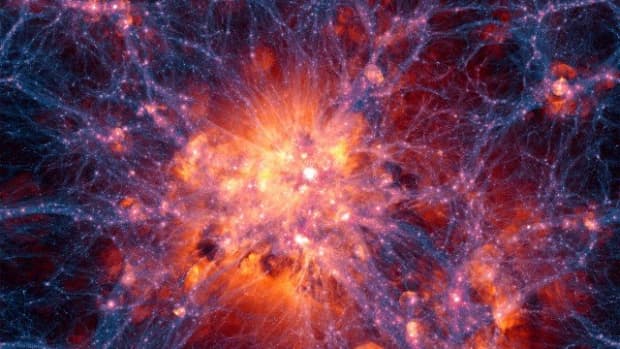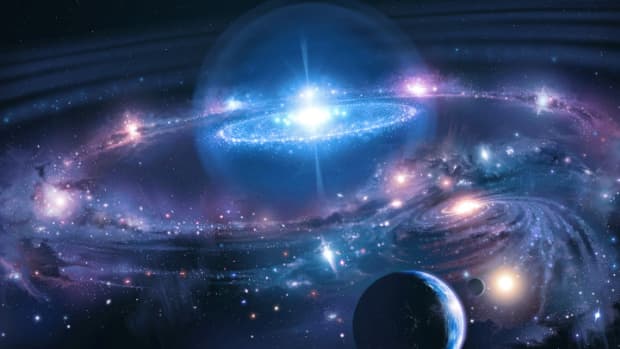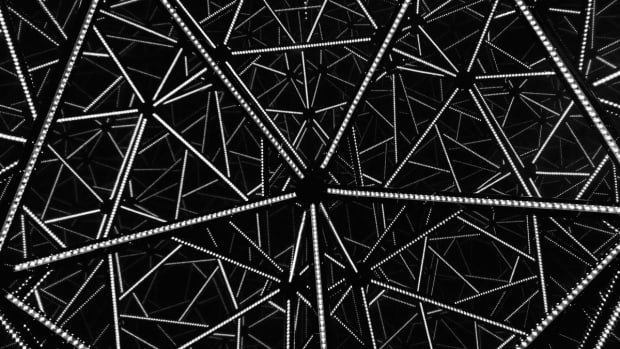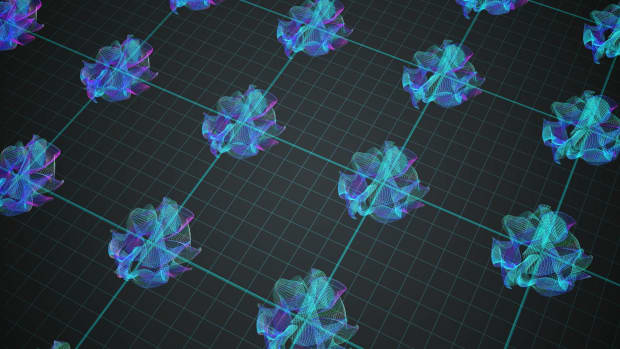Models of the Universe That Revise the Big Bang Theory

The Big Bang theory is not the only answer for how the universe began. Read on to learn about other intriguing theories.
Possible Alternatives to the Big Bang Theory
Asking how the Universe works is a bit of a loaded question with even more loaded answers. Pessimists and optimists have conflicting views, philosophers differ from realists, and religion and science seemingly contradict each other. But for the scope of this article, we will just look at how science addresses it with alternatives to the accepted theory of the Big Bang from which cosmic expansion arose.
I chose this viewpoint to examine because I want to see the merits and faults of other possibilities. In doing so, I hope to show how science can have implications outside its realm (often as an unintended consequence). It also illustrates how this field is dynamic and always subject to change.
Let's dive in.
Cyclic Model
The first idea we will look at arose from the minds of Steinhardt and Turok, who took a look at the implications of string theory with the arrow of time, or the forward progression we all go through despite the fact that many physics equations would work fine in the backward direction. Hundred of papers have been written on string theory, so spare me for glossing over the many details in an effort to get this idea across. In string theory, there are many more dimensions than our standard 4 (where 3-D objects exist in a space-time continuum).
What we consider 4-D space is really a “3-D world in a higher dimension space” moving through time, aka the 4th dimension. This space is known as a brane, and according to string theory, there should be many of them besides our own. Collisions between branes spark new ones in a Big Bang event like ours. The branes all merge together again before impact, then start anew. Nothing should stop this and so it continues forever, hence the cyclic nature of this model. Some implications for this theory can be seen in the cosmic microwave background, and now that gravity waves have been found, then they too can provide possible evidence for this hypothetical model (Frank "The" 56-7, Wolchover, Frank 262-9).
Of course, there is a problem with how this model operates. Alexander Vilenkin, a cosmologist at Tufts University in Boston, feels cyclic theory violates the second law of thermodynamics (that entropy increases as time progresses). If the cyclic model were true then the Universe would be smeared out as the disorder grows, lacking any recognizable structures The only way the cyclic model could work would be if the new iteration of the Universe were larger than the previous one while having the Big Crunch and expansion still dominating the cycle (Nadis 39, 41).
Bubbles
This second idea happens to come from the person in the mentioned critique of the cyclic model. Vilenkin thought he had found conclusive evidence for what existed before the Universe itself: nothing. He reached this striking conclusion after a long road which started after he read about the Big Bang in a book by Sir Arthur Eddington. This inspired him to pursue the subject matter further, eventually landing him at Kharkiv National University.
Once there, Vilenkin studied physics because of the possible career paths it could offer, as opposed to cosmology, his true passion. He didn’t end up getting into the graduate program, so he left Ukraine in 1977 and went to the US where he landed a post-doc position at Case Western Reserve. He officially worked on the electrical properties of metals but in his free time studied black holes. Thankfully, Tufts had a temporary position in cosmology available, and Alexander was able to secure it. Vilenkin eventually became director of cosmology there and was able to really focus on his true desire (Nadis 37-8).
Now secure, he started looking at inflation, or the rapid expansion that happened shortly after the Big Bang. Originally developed by Alan Guth in 1980, the theory arose as a result of particle physics implications that are subtle but important. At the high energies of the early universe, gravity began to act in reverse and thus became a repulsive force instead of an attractor like our everyday interaction with the Earth confirms. If a small state, i.e. the singularity of the Big Bang, were in this state then the repulsiveness would cause the material to fly everywhere in a Big Bang. It not only explained why it happened in the first place but also the homogeneous, or smoothness, of the Universe (38-9).
But what was not initially known at the time was that according to the theory inflation should go on forever, as work by Vilenkin in 1982 demonstrated. The actual mechanics are known as eternal inflation, and it means that other Universes should be created in different places because inflation continues to happen in different pockets of the Universe. He determined this because the repulsive nature of singularity breaks down space and the matter in it. Different folds of space, therefore, undergo inflation.
But what would such a place of many universes, a multiverse, even look like? In 1986 Vilenkin teamed up with Mukunda Aryul, a Tufts graduate student, on a computer project to help visualize the problem. What they found was analogous to bubbles forming in a sink, and if one worked backward then the Universe had a beginning where nothing existed (Kramer, Moskowitz, Nadis 38-9).
But how can something come out of nothing? Vilenkin says simply that conservation laws dictate that it must be the case. Gravitational energy draws materials together, while the energy of matter is repulsive and therefore moves away from other particles For a closed universe, the net energy must be zero, which his work shows is the case. But remember that because inflation is happening elsewhere, a new Universe is being born with potentially different physics from our own. What this means as to the creation of our physics is unknown, but it could imply that each universe has its own laws (39, 41).
Recommended
Quantum Darwinism
We now turn to a different source for our next alternative theory. At the time of her work, Laura Mersini-Houghton was a Fullbright Scholar Student studying physics at the University of Maryland. While this alone was a great accomplishment she went for broke and looked at the quantum nature of the Big Bang, not a small undertaking (for black holes follow relativity well but seem to break quantum mechanics). Hugh Everett was the first to investigate this and found that quantum mechanics almost demanded other worlds if singularities were to exist. Laura too reached the conclusion of a multiverse but, unlike Vilenkin, she took a different avenue: entanglement (Powell 62).
How? She used data from the Planck Telescope, whose mission was to map the cosmic microwave background (the state the Universe was in once matter became permeable for light, about 380,000 years after the Big Bang). She noticed asymmetries in the background that should not have been present if inflation was the sole event governing its shape. Yes, the field as a whole looks smooth like inflation predicts, but some anomalies are present in specific regions.
The upper field isn’t as smooth as the lower and a huge cold spot seems to exist also. According to Laura’s work, there is only a 5% chance that such structures are due to chance. 10,000 simulations of the Big Bang done by Yahebal Fantage of the University of Olso show that just 7 out of that 10,000 ended up with a background as seen by scientists (Powell 62, Choi).
But quantum mechanics has an answer to this dilemma. Around the time of the Big Bang the Universe was in a super dense and entangled state. In fact it fell into such a deep state of this that our Universe became entangled with other ones in the multiverse. The effect they have had on us is recorded forever in the cosmic microwave background. But with the quantum mechanics as a template we can have many permutations of Universes out there and they could easily be interacting with us in ways we don't understand yet. But of course some entanglement may mean not all Universe can survive, for one state usually ends up on top. Hence why we refer to it as quantum Darwinism (Powell 64).
Works Cited
Choi, Charles Q. “Universe Out of Balance.” Scientific American Oct. 2013: 20. Print.
Frank, Adam. About Time. Free Press, New York. Sept. 2011. Print.
---. “The Day Before Genesis.” Discover April 2008: 56-7. Print.
Kramer, Miriam. “Our Universe Just May Exist in a Multiverse After All, Cosmic Inflation Discovery Suggests.” HuffingtonPost.com. Huffington Post, 19 Mar. 2014. Web. 12 Oct. 2014.
Moskowitz, Clara. “Multiverse Debate Heats Up In Wake of Gravitational Waves Findings.” HuffingtonPost.com. Huffington Post, 31 Mar. 2014. Web. 13 Oct. 2014.
Nadis, Steve. “Starting Point.” Discover Sept. 2013: 37-9, 41. Print.
Powell, Corey S. “Beyond the Outer Limits.” Discover Oct. 2014: 62, 64. Print.
Wolchover, Natalie. "How the Universe Got Its bounce Back." quantamagazine.org. Quanta, 31 Jan. 2018. Web. 10 Oct. 2018.
© 2016 Leonard Kelley
Comments
Leonard Kelley (author) on August 08, 2016:
It is quite fascinating, especially because it is such an open ended question still. I figure the true answer will be amazing.
Leonard Kelley (author) on July 10, 2016:
Frank, you are not specific. What do you mean? And once expounded upon, how would you resolve the difficulties you see here?
Frank on July 07, 2016:
Who writes these things? They get paid? Terrible delivery. Unclear imagery. Cool content though.
Nikola Milovic on July 03, 2016:
From this consideration of the universe, we see clearly that all the hitherto understanding of the structure of the universe in a completely erroneous basis. Why is it so ?
Simply, that many scientists are "inoculated" vaccine that neutralizes awareness, as well as the power of recognition and understanding of the true causes of the phenomenon and intuition, which we currently leads to the perception of truth.
I worry people like this illogical theory and pointless attempts at using the PC and the model reaches the level of knowledge of the structure of the universe.
All this is mentioned in the article is totally contrary to the laws of nature and the authors of these theories do not seem to understand the structure of the human self and bottles in general. They all deny the existence of their Creator who gave them all the opportunities to get close to him, but unfortunately, they do not understand at all.
Science must be one that realizes that without respect for the spiritual entity of the universe (SEU), there is no possibility that the material means knowing what the top product of the SEU, as we ourselves are the product.
Who wants to no longer roams the wrong paths of different "universe", I shall try to do everything yourself wandering translate to the right path.
The universe is a sphere of infinite radius, filled Substance immobile ether, from which matter is formed by the high vibrations of ether, where the strings are formed in three spatial directions and in their sections of materialized in the form of quarks, which are held together by means of gluons.
All other forms and properties of matter and energy, resulting in the prescribed chain formation process and the resulting size of the properties are just unbalanced situation between matter and ether and these traits and ether. All prescribed than in what none of you believes in and why you are doomed to eternal wandering through the space in which there is not distinguish their consciousness nor absolute consciousness of the universe (ACU).
If someone interested in the details of formation of matter and what is the universe, you have my e-mail.
Leonard Kelley (author) on March 11, 2016:
I just aim for one article a day. Something to keep the blood flowing!
Ruth Mata from New Mexico on March 11, 2016:
That's a good idea! I haven't had much time lately to do as much reading as I would like to do. Maybe I should look into carving out more time to do so though.
Leonard Kelley (author) on March 10, 2016:
Thanks for the kind words Ruth!
I usually find that reading some of the Scientific American journals gives me some inspiration or topics I want to look more into. Maybe this might work for you too!
Ruth Mata from New Mexico on March 10, 2016:
This was an excellent way to start my day :) Great article!
I have found myself in a bit of a writers block lately, I desperately need to write soon.










